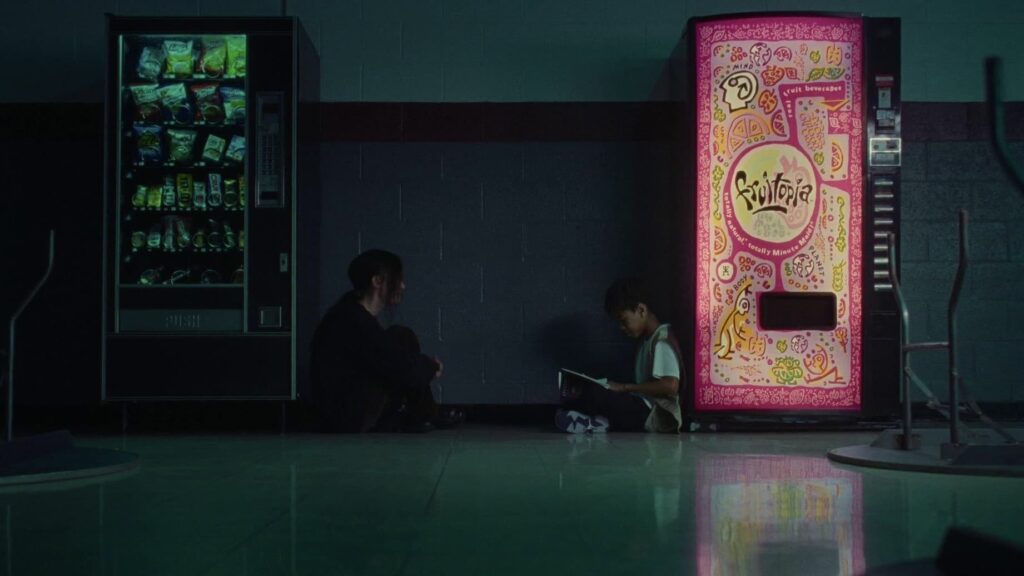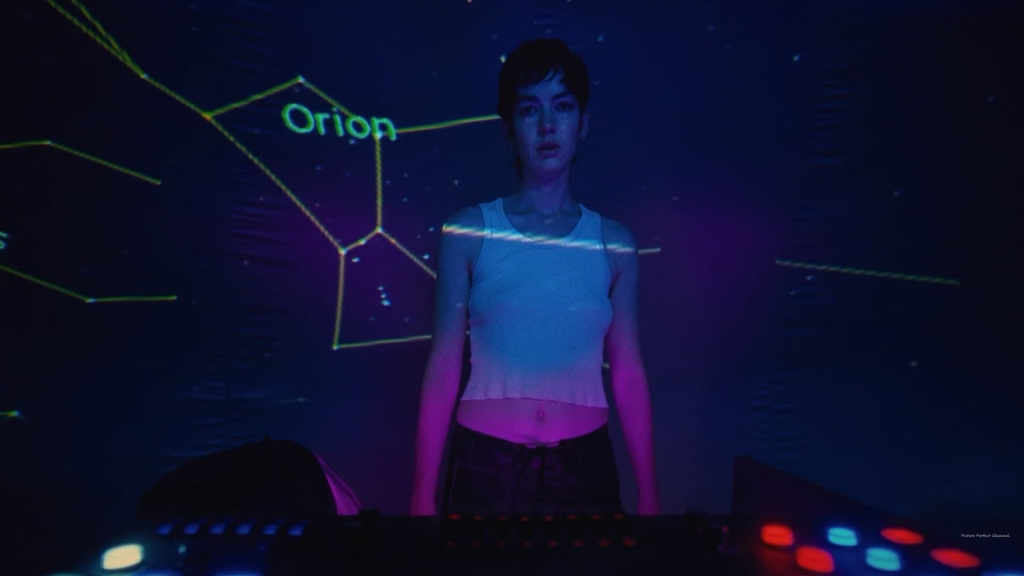We're all going to The Pink Opaque
If you’ve been hanging around film and TV forums the past fifteen years, you’ve probably heard the story of Cry Baby Lane. This TV movie by Nickelodeon aired once in 2000 during a nighttime SNICK Halloween special block. It’s a surprisingly macabre story for a channel known for its kids programming, though SNICK (a Saturday-night cable TV twist on TGIF) targeted preteens and teens rather than younger tots. In the movie, an undertaker tells local kids a ghost story of conjoined twins sawed in half, an evil spirit of one twin haunting the modern-day kids.
Since it only aired once, Cry Baby Lane turned into a ghost story of its own. Urban legend told of it being so scary and dark that Nickelodeon banned it from ever airing again. In 2011, a few people hazily remembered it in a Reddit thread that went semi-viral. No synopsis was available, so the bits people pieced together painted a picture of something sinister.
The truth, alas, was more mundane. Nickelodeon never banned it, they just didn’t get around to showing it again and stashed it in the vaults. (Reporting is inconsistent whether Nickelodeon actually received any pushback from parents for the film’s content. If so, it probably had to do with kids performing a pagan seance circa the Christian anti-Harry Potter crusade rather than disturbing imagery.) In the imaginations of curious film lovers who could not revisit the film, Cry Baby Lane became a haunted object, but when someone uploaded a VHS recording, the film was no scarier or darker than you’d expect from a TV-Y7-rated horror film. Cry Baby Lane’s real power was in the murmured way its legend passed from person to person, where it was a portal to some more frightening idea, some unspeakable and innocence-corrupting abyss of childhood fears.

Jane Schoenbrun is an extremely online millennial besides being one of the buzziest young directors in all of cinema. I can say with ~100% certainty that they had followed Cry Baby Lane’s saga, as all of those ideas are on sharp display in I Saw the TV Glow. The film follows Owen (Justice Smith) starting at age 12 when he meets the odd, 14-year-old Maddy (Brigette Lundy-Paine). Maddy is obsessed with a TV show called The Pink Opaque about two teen girls, Tara (Lindsey Jordan) and Isabel (Helena Howard), who meet at summer camp and subsequently fight monsters with the help of a psychic connection symbolized by a glowing pink ghost. The show’s “big bad” villain is Mr. Melancholy, a man-in-the-moon halfway between Melies’ A Trip to the Moon face and McDonald’s ex-mascot Mac Tonight.
The Pink Opaque, we learn, airs on a fictional channel called the Young Adult Network on Saturday nights, which sure sounds a lot like SNICK. Maddy tells Owen all about how scary the show is, how it has a rich and complex mythology, how it is building to some profound battle between the girls and Mr. Melancholy. Each episode has a “monster of the week” like it’s Buffy or X-Files or Power Rangers. The show I thought of, too, was Ghostwriter, the Canadian-produced PBS teen mystery show from the early ‘90s that used a glowing effect similar to The Pink Opaque’s ghost. I saw a few Ghostwriter episodes as a kid, and it still lives in the recesses of my brain.
The rest of the movie is an exploration of Owen and Maddy’s growing, twisting fandom of the series, and how that reflects each characters’ struggle to shape their own lives and identities. For most of the film’s duration, it’s more of a coming-of-age film than a horror film, but unlike Schoenbrun’s We’re All Going to the World’s Fair, I Saw the TV Glow shifts to outright horror several times, though the question of just how literal each strange, supernatural encounter is always lingers.
Over time, Maddy and Owen discuss how the show feels more real than so-called real life, a concept the film will push to its limit by its conclusion. Maddy identifies strongly with Tara, which leaves Owen as Isabel; just how much this is because he sees Isabel in himself and just how much he wants to be drawn into Maddy’s enigmatic orbit is another ongoing source of tension. One particular night, revisited through flashback throughout the second half of the film, the pair go out to the high school football field as if called by the moonlight, by Mr. Melancholy’s “Midnight Realm” magic. In one of these flashbacks, we see Owen wearing a dress.

This is where I’ll point out that the film practically begs for a queer reading, though to its credit I don’t think it strictly requires it to work as a piece of existential dread. The film has a bevy of themes and moments that have resonated with the trans community in particular: Post-high school, Maddy presents as gender-ambiguous and describes feeling “separated” from her physical self. All film long, Owen struggles to articulate some internal loathing of his body, of his insides not working in unison with his exterior. He’s as close to explicitly a closeted trans woman as possible without it being text. Schoenbrun is non-binary and transfeminine, and there’s no question they are capturing some of the complexity of that repressed gender identity in I Saw the TV Glow.
What I find even more potent than Owen and Maddy’s use of The Pink Opaque as a prism to their gender and sexual identity is the way the fictional show is used as a vessel for interrogating the passage of time. The show becomes a cipher for unfulfilled potential, as if an inner purity was discarded like some old VHS tapes in the trash. Like Cry Baby Lane, The Pink Opaque is most powerful as a word-of-mouth legend experienced by a select few as children, then remembered and discussed with darkness and complexity as years go by. One of the film’s most striking scenes comes with adult Owen reckoning with The Pink Opaque when he finally sees it with adult eyes, wondering literally if the show itself has changed or if only he has. (The film, to Schoenbrun’s credit, keeps this ambiguous as well.)
Unlike We’re All Going to the World’s Fair, I Saw the TV Glow gets better across its runtime. The closing twenty minutes are breathless and tense. As with Schoenbrun’s previous film, a key ending scene is built around a character describing an incident through their own eyes with narration rather than captured on camera. But unlike World’s Fair, I think it not only works here but is really only possible to depict as such. It reminded me of the finale of the great TV show The Leftovers, which ends on a similar scene and I also have to guess Schoenbrun is a fan of.
Yet I still have a bit of a nagging disappointment at the narrative destination of the film, even if that journey is riveting. Schoenbrun deliberately shapes the story as an anti-climax, of a character rejecting a call to action over and over. What we actually witness is not the promise of the premise itself, which occurs on the fringes, but its side effects in all their toxic agony. Schoenbrun does this wonderfully, and I think the ending works, but I can see a certain crowd hating this film for being such a tease. I recall hearing a podcast describe M. Night Shyamalan’s recent movies as “something interesting happens,” and if that sounds like the bare minimum to you, you’ll probably find I Saw the TV Glow frustrating.
To their credit, Schoenbrun is improving as a filmmaker. I Saw the TV Glow has much more heft and ferocity than the quirky, noodling We’re All Going to the World’s Fair. It has no extended ASMR clips and long-take webcam shots of a person walking around. Even the connective tissue in the film has flavor and punch. The look is consistent and fairly pleasing, saturated by the titular purple-ish glow and spiked with flashes of uncanny horror.

Much of the film rides on the shoulders of Justice Smith as Owen, and the result is divisive. I like his performance quite a bit, but I’ve always enjoyed Smith’s low-key, withheld demeanor dating back to Paper Towns. He’s mumbly and carries a strange energy, in line with Anna Cobb in World’s Fair, but in a way that enhances the portrait of a broken person out of touch with his inner truth. I won’t be nominating him for any end-of-year awards, but I appreciate his turn, particularly the way he stretches himself in the closing few minutes.
Honestly, I found the supporting performance from Lundy-Paine even more memorable. They carry Maddy with an awkward but irrepressible electricity, with some really locked-in intensity in a few key moments. Lundy-Paine makes Maddy casually confident without compromising her strangeness in such a way that it’s easy to imagine someone fragile like Owen being drawn to her.
I Saw the TV Glow adds up to quite a curious and provocative experience. I’m a bit surprised the response has been so rapturous; I like it, but I’m surprised so many people are riding its wave, as it’s very vibe-heavy. Even if I’m held at just a little bit of a distance by its anti-climax narrative, I still think it’s one of the freshest and most flavorful films of the year.
Is It Good?
Very Good (6/8)
Dan is the founder and head critic of The Goods. Follow Dan on Letterboxd. Join the Discord for updates and discussion.

